Editor’s note: This article was produced in partnership with Northwestern University’s Medill School of Journalism, Media, Integrated Marketing Communications.
While on a research trip to the Iraqi city of Basra in 1996, environmental engineer Souad Al-Azzawi encountered a mother taking care of three young children, all of them sick and unable to move on their own. With no idea why her children were ill, the mother hoped Al-Azzawi had come to help her family. Unfortunately, there was little Al-Azzawi—or anyone else—could do.
As the director of the doctoral program in environmental engineering at the University of Baghdad, Al-Azzawi had been researching radioactive contamination in Basra for years. She would go on to publish studies showing that cases of leukemia in children in Basra increased by 60 percent between 1990 and 1997, and that the number of children born with severe birth defects increased by a factor of three.
Al-Azzawi’s research points to depleted uranium as the culprit. Depleted uranium is a by-product of the enrichment of natural uranium, a process used to create fuel rods for nuclear power plants. Due to its incredible density, the United States and United Kingdom have used depleted uranium for tank armor and ammunition during military combat since the early 1990s, during the First Gulf War. While not as radioactive as natural uranium, the metal nevertheless poses a threat.
Basra is located in the very southern tip of Iraq, wedged between Iran, Kuwait, and the Persian Gulf. It is the northern terminus of Highway 80, which runs due south all the way to Kuwait City. Iraqi forces used the road to stage the 1990 invasion of Kuwait. Months later, as those same troops retreated, they were pinned by 10 hours of US aerial bombardment that left a trail of hundreds of smashed cars, tanks, and other vehicles and equipment strewn along the road.
“The kids were playing on the tanks [leftover from the Gulf War], and they were collecting the bullets,” Al-Azzawi said. “For some of the people, those bullets stayed in their houses for years. It was a disaster.”
Al-Azzawi first learned about the effects of depleted uranium in the early 1990s from environmental activists. Since then, she has devoted her life to researching its impacts, producing more than 50 research papers on chemicals used in the region and conducting three exploration programs to collect data from across areas in Iraq exposed to weapons of war.
That data, Al-Azzawi said, is still not enough. There has been a lack of research and education in post-conflict communities in Iraq and Syria, she said, and cleanup efforts by both UN member states and affected communities have failed.
Editor’s note: This article was produced in partnership with Northwestern University’s Medill School of Journalism, Media, Integrated Marketing Communications.
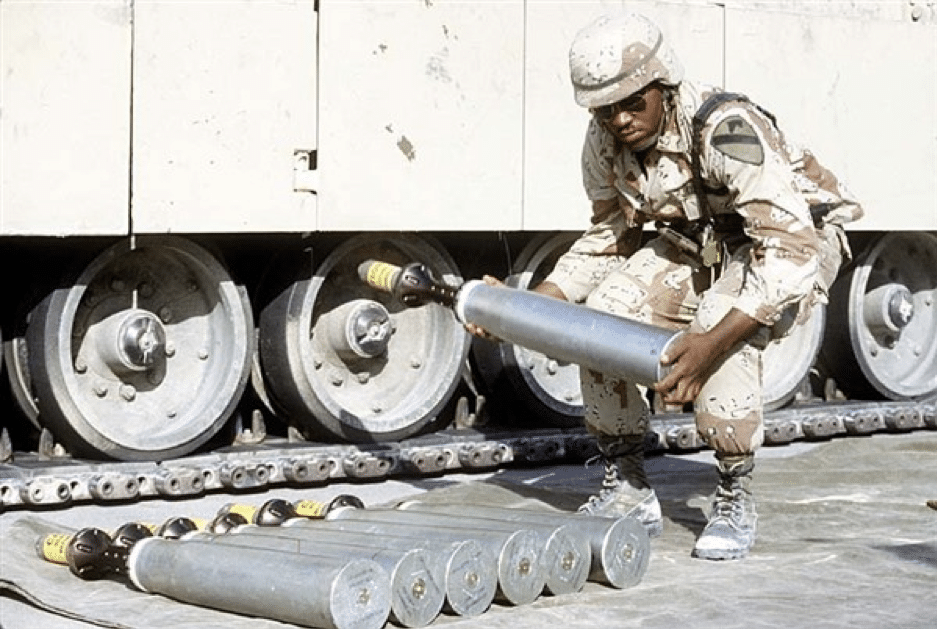
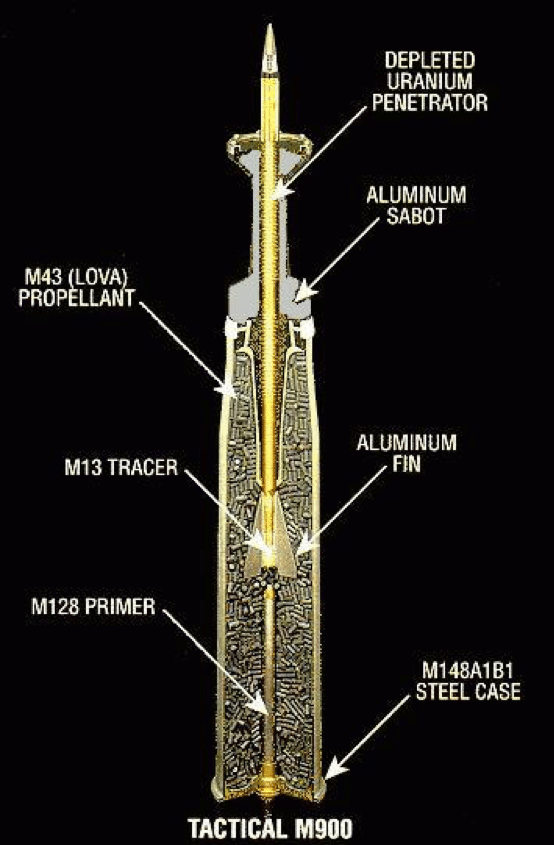
Depleted uranium in war
The United States first deployed depleted uranium in 1991 during the Gulf War, and it proved so effective that it was used again a few years later in the Bosnian War. With the 2003 invasion of Iraq, the toxic metal returned in force to the Middle East.
While the US Defense Department vowed to cease use of the toxic metal in conflicts beginning in 2015, thousands of rounds of depleted uranium ammunition were fired in Syrian airstrikes later that same year, according to the Pentagon.
“It comes down to military utility,” said Doug Weir, research and policy director at the Conflict and Environment Observatory. “Militaries believe they have to use this weapon because it’s the best possible weapon for defeating enemy armor, and any other considerations are secondary today to the military imperative to use it.”
Othman Al Ani, program manager at Middle Eastern Immigrant and Refugee Alliance, a Chicago-based organization helping refugees from the Middle East, agreed: “War tactics are developed without any consideration for the environment.”
According to a report by the United Nations Environment Programme (UNEP), the total amount of depleted uranium fired during the 1991 Gulf War was 300 metric tons, roughly 50 metric tons of ammunition from tanks and 250 metric tons from aircraft. The United States is responsible for the bulk of it; the United Kingdom accounted for less than 100 rounds.
The United States authorities have not released any detailed information about where depleted uranium was used during the Gulf War, according to the UNEP report. In 2003, a team of experts recruited by the International Atomic Energy Agency (IAEA) investigated nearly a dozen sites in Kuwait and reported that depleted uranium ammunition fragments could still be found at several locations. But there has been no comprehensive investigation of potential sites in Iraq.
The United States has been similarly opaque about where and how much depleted uranium was used during the 2003 Iraq invasion. But according to the UNEP, figures from various speculative studies estimate that the US-led coalition dispersed anywhere from 170 to 1,700 metric tons of the toxic metal. For its part, the United Kingdom Defense Ministry has released some information about where depleted uranium was fired and has suggested that its own forces accounted for less than 2 metric tons.
According to Weir, Iraq’s contamination from depleted uranium was 50 times greater than that in the Balkans.
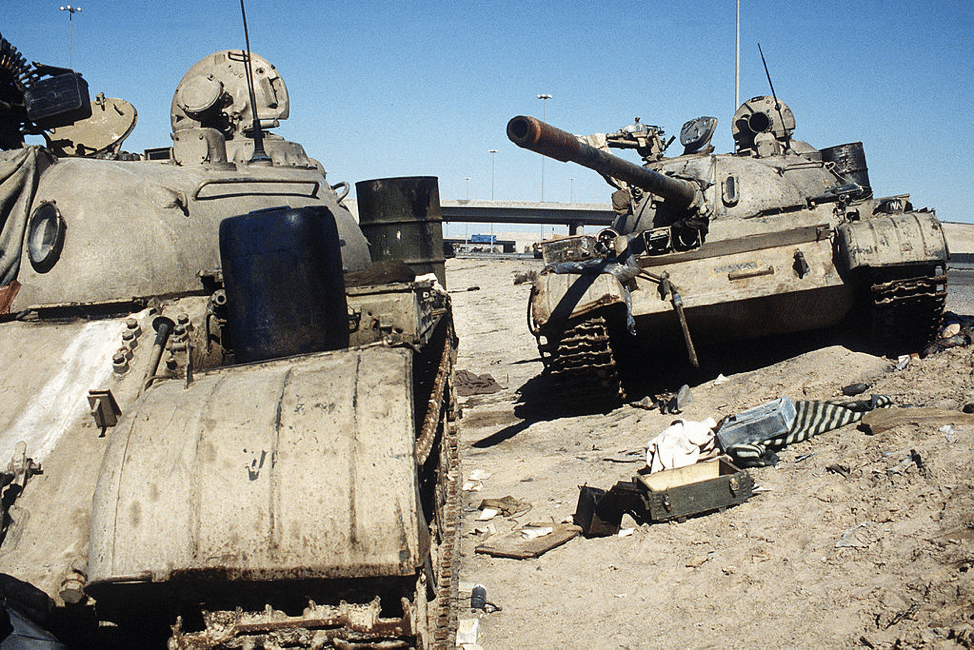
The public health risks
In 2001, the World Health Organization (WHO) completed a scientific review that concluded that depleted uranium is both chemically and radiologically toxic. It noted that long-term studies of workers exposed to depleted uranium show some impairment of kidney functions. Further, it stated that insoluble inhaled uranium particles (around 1 to 10 micrometers in size) can settle in the lungs and, with a high enough dose over a prolonged period, lead to lung cancer. While exposure for military personnel within armored vehicles is unlikely to rise to critical levels during conflict, those who leave the confines of the tank have increased chances of exposure to the toxic metal. The WHO review also emphasized that young children playing in conflict zones have a greater chance of exposure due to contaminated soil and should be prevented from touching the substance.
Whether these populations are actually informed of the possible impact of depleted uranium is unclear, Weir said.
“To my knowledge, there’s not the level of risk-awareness [that you have] about explosive remnants of war, where you have organizations going out into schools and teaching students not to touch mines or munitions or whatever else,” Weir said. “You don’t really get that with depleted uranium.”
Most Iraqi communities during and after the Gulf War and the Iraq War lacked information about depleted uranium, Al-Azzawi said, largely because the government was overwhelmed with other efforts. She admitted most of her publications regarding the impact of depleted uranium could not be published during the 1990s or early 2000s because the Iraqi agriculture minister claimed her results were terrifying people and would render farmers unable to market their products.
In 2013, the WHO and the Iraqi Health Ministry released a study examining the prevalence of congenital birth defects in areas of Iraq where toxic munitions had been used by coalition forces. The study found no clear evidence of an unusually high rate of birth defects. (Although the WHO was explicit that the study did not attempt to examine the link between congenital birth defects and the presence of depleted uranium, the findings undermined earlier studies that had linked higher rates of birth defects in the region to the presence of toxic munitions by finding no such high rates.) Yet, in interviews conducted by The Guardian, former UN and WHO officials questioned the study’s scientific credibility, and one expert even went so far as to call the report “suspicious.”
More recent research has brought further evidence to light.
In 2020, a study published in Environmental Pollution found that Iraqi children born into families living close to Tallil Air Base in Iraq are at a higher risk of congenital diseases. Hair and deciduous teeth sampled from the children living close to the US military air base contained 28 times more thorium, a by-product of depleted uranium decay, compared to samples from children who lived further away.
“Our suspicion is that the children were exposed to depleted uranium,” said Mozhgan Savabieasfahani, an environmental toxicologist and lead author of the study. “The families of these children recall seeing smoke coming out of the military base and many of them smelled it for months.”
Military trash is often burned at the Tallil air base, which is also surrounded by multiple graveyards of abandoned tanks—a potential source of depleted uranium, according to the paper.
The findings suggest that the impact of depleted uranium on human health is long-lasting and that the toxic metal might be disturbing the development of the embryo or the fetus. Environmental pollution would pose a greater threat to young children and mothers in Iraq, who are more vulnerable and exposed longer to contaminants than US soldiers, according to scientists.
The study doesn’t definitively prove that depleted uranium is causing congenital diseases in Iraq; it only shows that exposure to the metal and higher rates of congenital diseases are happening in tandem. There could be other factors in a war zone that play a role or are responsible, the researchers cautioned.
The WHO has acknowledged that there are gaps in its research and has called for further studies to be conducted. Zhanat Carr, a member of the ionizing radiation staff at the WHO, recognizes that “at the moment, we do not have any ongoing activity related to assessing depleted uranium health risks, since there have been no new studies that would challenge or deviate from the conclusions and recommendations of WHO’s [2001] report on depleted uranium.”
Of course, the ideal way to close the gaps in research would be to conduct studies on site in places like Iraq. But that could be complicated.
“With the general collapse of the healthcare system, malnutrition, and everything else that goes with it, an epidemiological study to track cancer, for example, in a population in Iraq would be next to impossible to undertake.” Weir said. “Could you track 5,000 or 10,000 or 20,000 people in Iraq over a period of 10, 15, or 20 years with that much internal migration and disruption to the healthcare systems?”
Although the metal lingers in the soil and across elements it comes in contact with, it is particularly difficult to find and even tougher to clean up, Al-Azzawi said, and when radioactive dust enters into the atmosphere, the contamination spreads widely.
“Radiation exposure causes long-term damage to not only humans, but all species inhabiting the planet and the ecosystems around them,” said Satya Tripathi, UN assistant secretary-general and head of the UNEP’s New York office.
Last May, the Arab Scientific Community Organization, an independent nonprofit, published Al-Azzawi’s paper, “Modeling Depleted Uranium Contamination in Southern Iraq.” The report followed high levels of contaminated water washed away from destroyed artillery during rainstorms. The water eventually reached vegetative cover and was used in the production of food, the report said.
Jet fuel poses health risks to military personnel; effects of burn pit exposure less clear
By Anne Snabes
Garett Reppenhagen’s US Army base in Iraq burned mounds of waste in a large pit that smelled like melting plastic. “I tried to stay away from it,” said Reppenhagen, a veteran who served as a cavalry scout and a sniper in Iraq from 2004 to 2005. “I was pretty certain there was all sorts of toxic things in there.”
Reppenhagen, now the executive director of Veterans for Peace, said his living quarters were less than a quarter of a mile from the burn pit, and the building where he and others ate was next to it. “They threw just about everything into that burn pit, from electronics to plastics to … whatever’s considered waste,” he said.
Exposure to environmental hazards is nothing new in war zones. Vietnam War veterans were exposed to the herbicide Agent Orange; Gulf War veterans inhaled depleted uranium and sarin nerve gas. And US military veterans serving in the Middle East since the 9/11 attacks on the Pentagon and the World Trade Center in 2001 have encountered a variety of hazardous chemicals, including those in burn pits and jet fuel.
But studies of those two contaminants show just how hard it can be to prove the harm caused by environmental factors, and even if it is proved, how hard it can be to diminish that harm in a combat zone.
On one hand, even though the military has disposed of all sorts of trash by burning it in open pits and some of the trash contain toxins, a National Academies report didn’t show that a burn pit in Iraq affected the health of military personnel, according to Ellen Eisen, an adjunct professor in University of California, Berkeley’s School of Public Health.
On the other hand, a common variety of jet fuel used in the US military (known as jet propellant-8, or JP-8) contains hydrocarbons that have been shown to cause hearing loss, according to O’neil Guthrie, an associate professor at Northern Arizona University and an audiologist who has worked with veterans.
In both cases, the US military has made efforts to reduce exposure to these environmental toxins. But in war zones, environmental dangers often pale in comparison to the possibility of instant kinetic death, and burn pits and jet fuel will continue to be used in some cases, as deemed appropriate to the military situation.
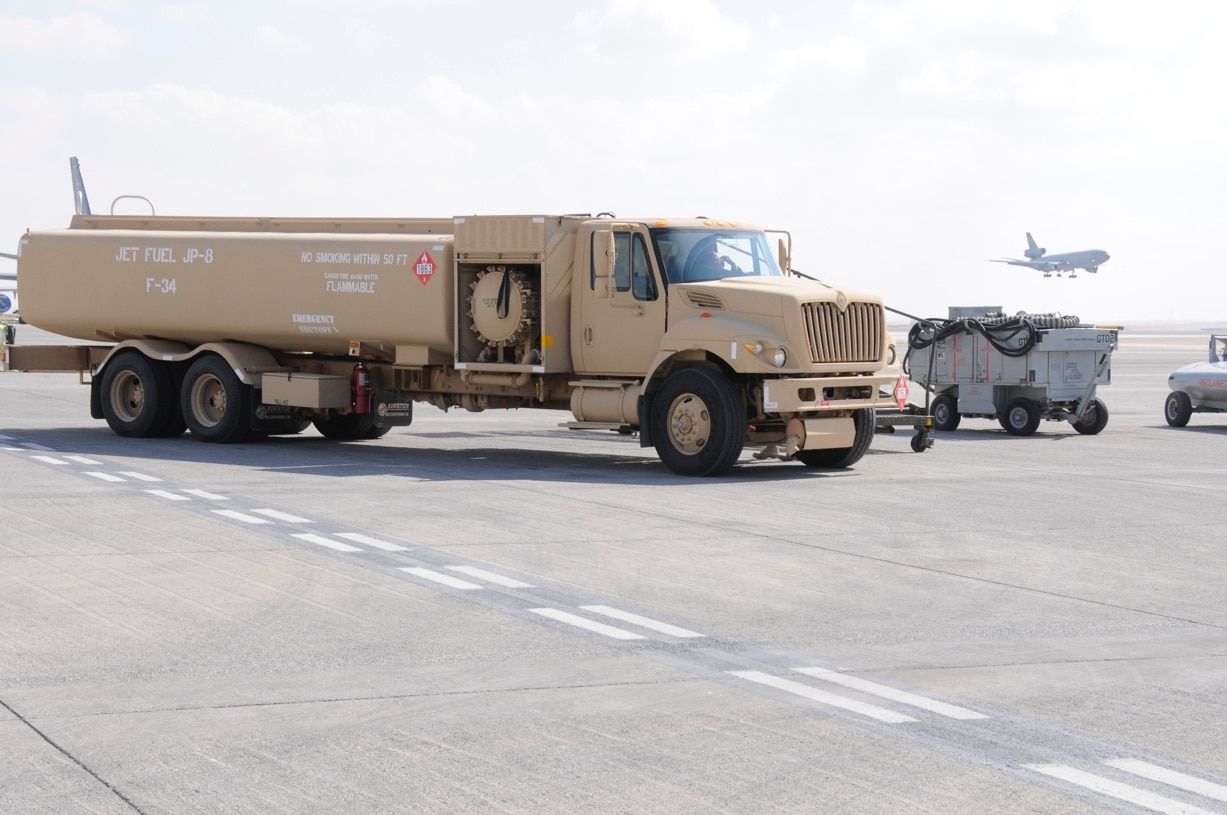 This truck contains jet fuel that will supply a jet. (US Air Force photo/ Senior Airman Brian J. Ellis)
This truck contains jet fuel that will supply a jet. (US Air Force photo/ Senior Airman Brian J. Ellis)
Despite known or possible health risks, the Army still uses JP-8, a kind of jet fuel, in its aircraft, according to David Hylton, an Army spokesman. It uses Jet A-1, a different kind of jet fuel, when fueling up at civilian airports.
Guthrie said everyone in the military is exposed to jet fuel at some point. “Jet fuel isn't just used in jets,” he said. “They're used in tanks ... and other military vehicles. They also used them in lamps.”
Before Guthrie started working with his research group, the team tried to learn whether jet fuel causes hearing loss. He said they exposed rodents to jet fuel and measured their hearing. The fuel led to the death of sensory cells in their ears, which brought about diminished hearing that remained permanent. The research on the animals is indicative of what happens in humans.
“The physiology, morphology, and biochemistry of rodents' ears are similar to that of human ears,” Guthrie explained.
When he joined the research group, he wanted to learn if jet fuel harms the part of the brain that processes sound, he said. So the researchers exposed rats to jet fuel at levels too low to impact the ears and found that it affects the brain even before it impacts the ears. People may have trouble understanding what they hear before they start to acquire hearing loss, he said.
“Hearing loss—obviously, it affects their lives deeply, because it prevents them from engaging in effective communication,” he said. “So you can imagine, it becomes difficult then to deal with a spouse or other significant figures in their life.”
Jet fuel can harm the human body in other ways as well. Defense Department spokeswoman Lisa Lawrence said dermatitis and irritation to mucous membranes are the most common acute health effects from jet fuel. A few studies suggest that JP-8 may impact the nervous system, according to the Agency for Toxic Substances and Disease Registry. High amounts of jet fuel could cause narcotic effects, according to a US Army training document. Lawrence said that military employees who enter fuel tanks wear respirators, gloves, coveralls and boot covers.
Reppenhagen said he once watched someone lose control of a hose while filling up a tank with jet fuel. He said the man “basically got completely soaked” in the fuel.
Reppenhagen said the soldier just continued on — fueling the next vehicle.
It is not clear how severely military personnel were exposed to chemicals emanating from one particular burn pit in Iraq, or how those chemicals may have affected their health. Eisen served on a committee of researchers and physicians for the Institute of Medicine, now part of the National Academies, that concluded no burn pit chemical at Balad Air Base in Iraq “appears to have been present at concentrations likely to be responsible for the adverse health outcomes,” according to the committee’s briefing slides. The group did suggest, though, that people may have been exposed to mixtures of chemicals that could have harmed their health.
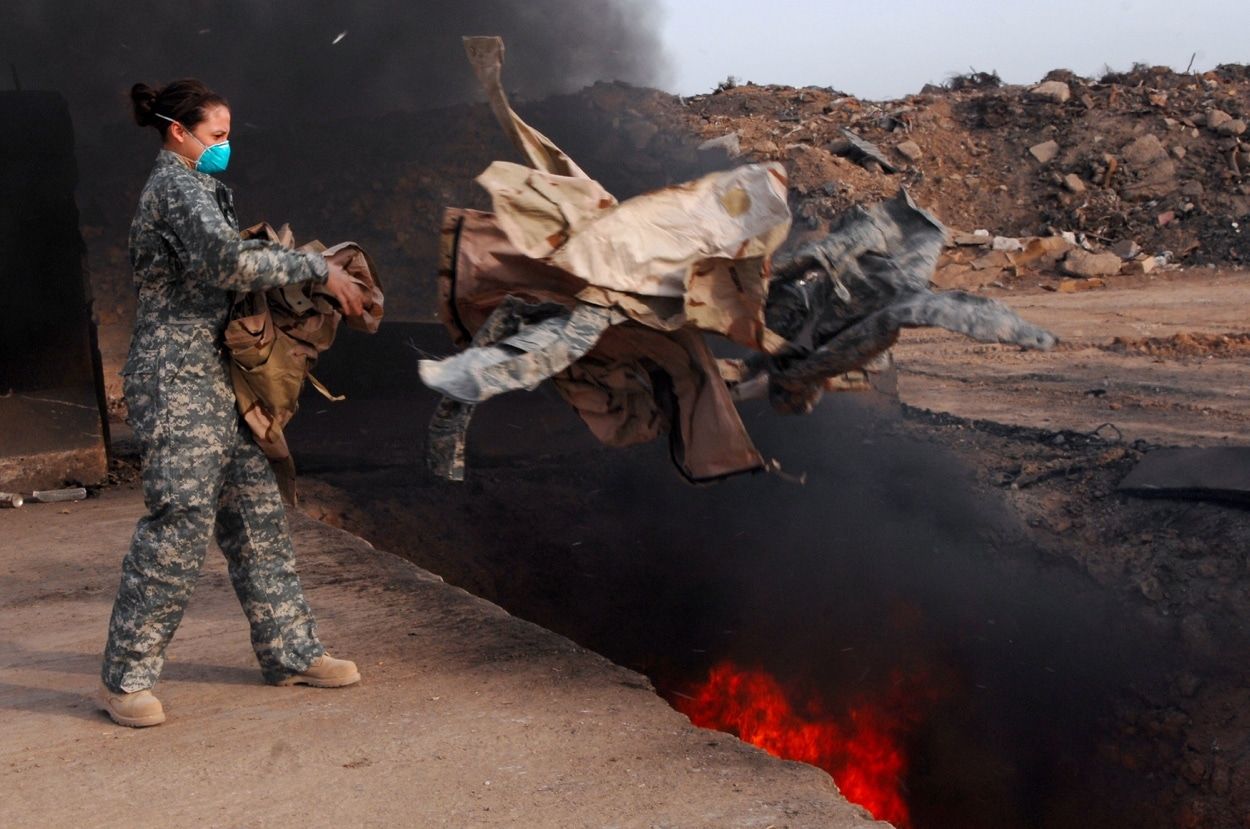 Senior Airman Frances Gavalis wears a mask as she throws clothes into a burn pit at Balad Air Base in Iraq in 2008. (US Air Force photo/Senior Airman Julianne Showalter)
Senior Airman Frances Gavalis wears a mask as she throws clothes into a burn pit at Balad Air Base in Iraq in 2008. (US Air Force photo/Senior Airman Julianne Showalter)
According to a Defense Department report, a military base cannot use a burn pit unless a combatant commander sees “no feasible alternative.” As of March 2019, the US military operated five burn pits in Syria, one in Afghanistan and one in Egypt, while contractors ran two in Syria, according to the report. The department still uses burn pits, because military locations in the Middle East are often temporary and because it takes considerable resources to create and operate landfills and incinerators. It is also normal in some countries to use burn pits as a method of garbage disposal, according to the report, so some local contactors the US military hires burn waste.
The number of burn pits that US forces in the Middle East use has decreased, according to the Defense Department, and the department is looking into alternatives to the pits. One example: incinerators that produce energy the military can then use. But for temporary US military camps and rapidly moving combat overseas, garbage is likely to continue to be burned in pits, as it has been for decades.
The politics of research
The biggest obstacle to conducting more research—and to cleanup efforts—is the tense global political environment, said Katherine Prizeman, a political affairs officer at the UN Office of Disarmament. In a conference room on the 30th floor of UN headquarters in New York, Prizeman and her colleague Suzanne Oosterwijk admitted depleted uranium is not a top priority for their department.
“It’s sort of the have and have-nots issue,” Prizeman said. “Only certain states have nuclear weapons, and only certain states even have the capacity to have uranium.”
In 2001, Iraq sponsored a resolution in the UN General Assembly to document the impacts of depleted uranium use in conflict. The measure failed to win a majority. Six years later, a different resolution on the subject was sponsored by the Non-Aligned Movement, a group of 120 developing states that make up the majority bloc of the General Assembly. It failed, too.
Since then, the resolution is brought forth to the General Assembly every two years and has attracted support from 155 member states. But four countries—France, Israel, the United Kingdom, and the United States—regularly oppose the measure.
The UN Office of Disarmament publishes a biennial report on the status of depleted uranium around the world and includes an assessment from UN member states on research they’ve conducted. Prizeman pulled out the most recent report from her stack of notes and research papers for reference. In the last few years, she said, most agencies have written back to say that no new information has been collected.
The International Atomic Energy Agency has not conducted any new research since 2010, Prizeman confirmed. Instead, the agency requests UN member states to conduct their own assessments.
“What the non-aligned states are saying is, ‘We need more research to understand this,’ and those who oppose this issue are saying, ‘It is all inconclusive, we don’t know anything,’” Prizeman continued.
On the way out?
Depleted uranium weapons might just be on their way out for the United States. The highly politicized status of continued use of the toxic metal could give political leaders a bad rap, Weir said. Moreover, future military innovations might eliminate the need for the metal completely. When ammunition was being developed for the Joint Strike Fighter, a combat aircraft currently under development, the United States was clear it did not want to use depleted uranium or any other toxic materials in the ammunition.
“This was because the partners in the Joint Strike Fighter international consortium wouldn’t want to use depleted uranium, [so] there was pressure on the United States that the ammunition should not be depleted uranium or could not be depleted uranium,” Weir said.
Additionally, for the past few years, the US military has debated retiring the A-10 gunships that are responsible for more depleted uranium contamination than any other platform. But a decision made last August means the A-10s will be sticking around for at least another decade.
While political pressure might motivate the United States to stop deploying depleted uranium, the issue of cleanup remains unresolved. According to the UN Office of Disarmament, cleanup of areas such as those around Basra would be both massively expensive and logistically challenging for states to attempt.
“So you think of a place like Syria, hopefully a conflict [that] ends before our lifetimes. Just think of everything that has to be cleared, all those remnants of war. It’s a whole host of things,” said Prizeman. “The UN Mine Ban Treaty is 20 years old, and they are still clearing mines in Laos and Cambodia and other places.”
Of course, there are no obligations for states that use depleted uranium ammunition to clean up their own mess. The most recent version of the UN General Assembly resolution on depleted uranium in 2018 added language that encourages assistance in assessment and clearance, yet there has been only a limited effort to offer support. Weir mentioned that the United Kingdom has made some advances in removing depleted uranium in Iraq. There has also been some movement to isolate damaged tanks in Iraq that currently sit in dumps. These areas are often not roped off, though, and Iraqi scrap metal workers could be exposed to depleted uranium when scavenging for other metals for resale.
The cleanup of contamination often depends on the capacity of the state after conflicts subside. When Weir conducted research on the impact and cleanup of depleted uranium in the Balkans, some areas received more assistance from their government than others. While the Serbian government spent a considerable amount of resources to clean up the 12 sites where NATO used depleted uranium, Kosovo was reliant on the NATO-led international peacekeeping force for cleanup. None was completed.
“They are facing a whole lot of environmental problems post-conflict.” Weir said. “The chances of it being addressed or remedied in a meaningful way are fairly slim.”
Despite these slim chances, Al-Azzawi continues to translate her research so that other experts and universities can follow in her footsteps. Research into and education about the effects of depleted uranium have been deficient for over 20 years, she said, and the world has been sleeping on this problem.
“I’m trying to publish my work in Arabic so researchers know how to conduct research in other places,” she said. “This is not the end of it.”
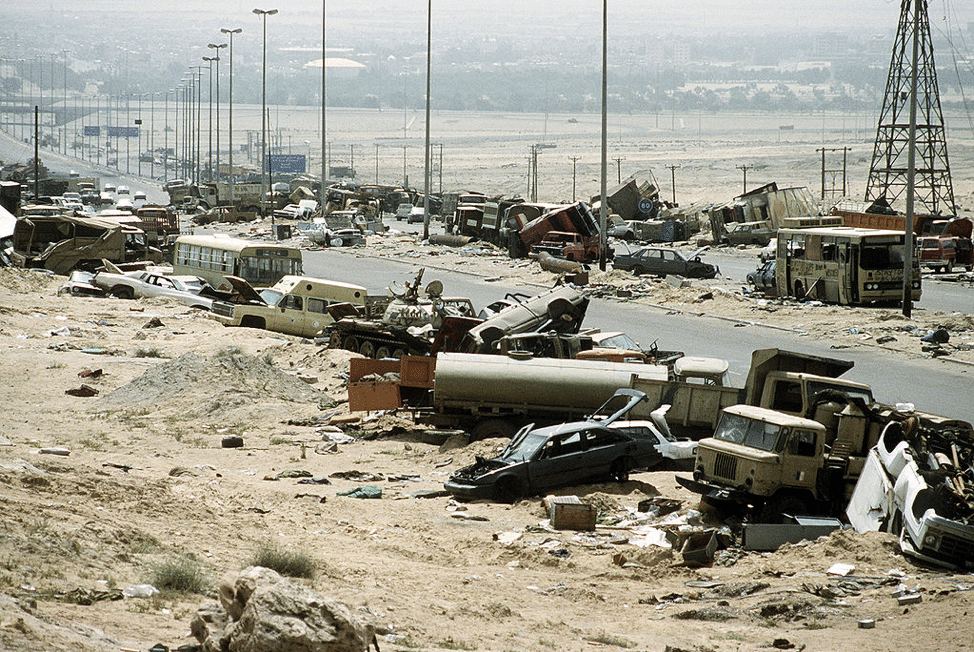








Are US tanks containing depleted uranium still in use?
There is a row about the possible use of du munitions in Ukraine at the moment, using weapons supplied courtesy of the UK.